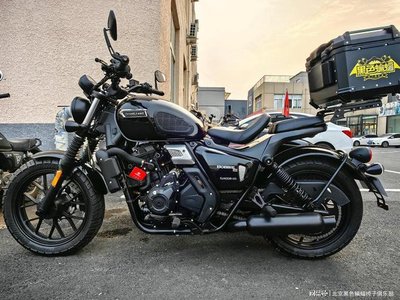
The Psychological and Physical Challenges of Motorcycle Riding
CustomStoreMCBikerIntroduction
Motorcycle riding is an exhilarating experience that offers freedom, adventure, and a strong sense of community. However, beyond the thrill, it presents both psychological and physical challenges that riders must overcome to ensure safety and enjoyment. Whether you're a seasoned rider or a beginner, understanding these challenges can help you prepare better and become a more confident motorcyclist.
Psychological Challenges of Motorcycle Riding
1. Fear and Anxiety
For many riders, especially beginners, fear and anxiety are significant psychological barriers. The fear of crashing, dealing with unpredictable traffic, or encountering hazardous road conditions can be overwhelming. Riders must build confidence through practice, training, and exposure to different riding environments.
2. Focus and Mental Fatigue
Unlike driving a car, motorcycle riding demands continuous focus and quick decision-making. Riders need to be hyper-aware of their surroundings, anticipate other drivers' actions, and adjust their responses accordingly. Long rides can lead to mental fatigue, which affects reaction time and judgment.
3. Risk Perception and Decision Making
Motorcyclists constantly evaluate risks and make split-second decisions. Poor judgment, overconfidence, or misjudging road conditions can lead to accidents. Training and experience help riders develop better risk perception, improving overall safety.
4. Stress and Road Rage
Traffic congestion, reckless drivers, and unforeseen delays can cause stress and frustration. Learning how to manage emotions and stay calm under pressure is crucial for maintaining control of the motorcycle and making rational decisions on the road.
5. Riding Alone vs. Group Riding Challenges
Some riders prefer solo trips, while others enjoy group rides. Riding alone requires self-sufficiency and the ability to handle emergencies without immediate help. Group riding presents different challenges, such as maintaining formation, communicating effectively, and dealing with peer pressure to ride beyond one's skill level.
Physical Challenges of Motorcycle Riding
1. Endurance and Fatigue
Riding a motorcycle for extended periods requires physical endurance. Holding a steady posture, maintaining balance, and handling the bike’s weight can lead to muscle fatigue, especially for long-distance riders. Regular exercise and strength training can improve endurance and prevent fatigue-related mistakes.
2. Weather Conditions
Riders are directly exposed to the elements, making weather a significant physical challenge. Cold temperatures can cause numbness and stiffness, while extreme heat can lead to dehydration and heat exhaustion. Proper gear, hydration, and preparation are essential to withstand varying weather conditions.
3. Riding Posture and Physical Strain
Improper riding posture can lead to back pain, wrist fatigue, and neck strain. Riders must adjust their posture, use ergonomic gear, and take breaks during long rides to avoid discomfort and injuries.
4. Handling Heavy Motorcycles
Larger motorcycles require physical strength and skill to maneuver, especially at low speeds or during sudden stops. New riders often struggle with balance and bike control, which can lead to falls. Practicing slow-speed maneuvers and strength training can improve handling ability.
5. Impact of Vibration and Road Conditions
Continuous exposure to motorcycle vibrations can cause numbness in hands and feet, affecting control. Rough road conditions can also put strain on the rider’s body. Wearing padded gloves, using vibration-dampening grips, and choosing well-maintained roads can help mitigate these issues.
Overcoming These Challenges
1. Training and Practice
Enrolling in a motorcycle safety course, practicing regularly, and gradually increasing riding difficulty can help build confidence and improve skills.
2. Mental Preparation and Awareness
Mindfulness techniques, controlled breathing, and stress management strategies can help riders stay calm and focused. Being mentally prepared for long rides and unpredictable situations reduces anxiety and enhances decision-making.
3. Physical Conditioning
Strengthening core muscles, improving flexibility, and engaging in cardiovascular exercises can help riders withstand the physical demands of motorcycling. Yoga and stretching can also prevent stiffness and muscle strain.
4. Choosing the Right Gear
Investing in high-quality protective gear, including helmets, gloves, riding jackets, and boots, improves comfort and safety. Specialized clothing for different weather conditions enhances endurance and protection.
5. Safe Riding Practices
Following traffic laws, maintaining a safe speed, using defensive riding techniques, and avoiding distractions reduce the risk of accidents. Regular bike maintenance also ensures that the motorcycle remains in optimal condition for a safer ride.
Conclusion
Motorcycle riding offers a unique sense of freedom and adventure, but it also comes with psychological and physical challenges. By understanding these difficulties and preparing accordingly, riders can enhance their experience while staying safe on the road. Whether overcoming fear, building endurance, or improving focus, the key to successful motorcycle riding lies in continuous learning and self-improvement.
Want to know more about the knowledge of the motorcycle and motorcycle club equipment customization guide. You can click on the mcbikercustomstore.us.









